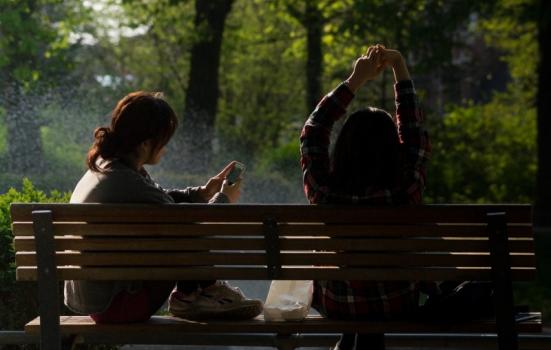Mobile phones are an intrinsic part of our lives, and they’re also an incredible space to host art, says Richard Warburton.

Technology is embedded within our practice, whether front and centre or quietly humming away in the background. It enables our work to be responsive, effective and communicative.
At Invisible Flock, we often make work for mobile handsets as our phones embody and collate so much of our lives, both consciously and unknowingly. They are accidental diaries recording not just our thoughts but our whereabouts; they know exactly where we are, what direction we are facing and how we spent the last 20 minutes.
There is no threshold to cross over, no uncertainty of invite, no nervousness of improper engagement
Mobile phones are also an incredible space to host art. Put simply, the phone becomes your venue, gallery or theatre. There is no threshold to cross over, no uncertainty of invite, no nervousness of improper engagement – it is for all intents and purposes a space curated by you for you. It can fit with your schedule, your attention span and your geography. The phone is aware of the time zone you occupy, the weather you are experiencing and architecture around you.
With phones, you can make work that crosses physical boundaries and borders – small-scale work that can have an international reach. You can make work that has time to exist beyond traditional schedules, slowly building and attracting audiences over time.
Invisible Flock
Over the past few years at Invisible Flock, we have embedded the process of human-centred design into our work flow, ensuring that the ideas, objects and art is made with our audience. Often this means bringing the audience directly into the making process from the beginning.
A lot of the work is born from face-to-face meetings and interviews with our audience, exploring the needs, desires and outcomes of the piece. It requires an openness and transparency about our practice and methods, but also requires getting first proofs and iterations into the hands of participants and audiences. Most of our big leaps forward are learnt in response to this.
Much of the work we create is about decoding or deciphering relationships – relationships with each other, with the world, and with the environments we inhabit – and through this, our relationship with technology. The technology we employ is fundamentally used to express and broadcast meaning.
It allows the work to scale up while also maintaining a sense of intimacy and enables our work to translate across borders and beyond traditional spaces and venues, and reach a wider audience. For some work it also allows for a greater degree of insight and a longer lifespan for the work, a way in which we can present or host more of the ideas, responses and material generated.
We believe that as technology becomes more embedded within our lives and our daily interactions – either directly with others or with the physical architecture systems and tools that surround us – so too will expectations that all art forms, whether in their creation or presentation, increasingly reflect this relationship.
Richard Warburton is an artist at Invisible Flock.
invisibleflock.com



